

The 2018 Governor General's Medals in Architecture honor outstanding buildings across Canada recognized by The Royal Architectural Institute of Canada (RAIC) and the Canada Council for the Arts. The biennial awards celebrate outstanding design in recently completed projects by Canadian architects. The 12 projects represent many types and sizes of buildings – from an international airport and sports complexes to a park pavilion and small hospital. They include a visitor centre at a national historic site, a library in a 170-year-old church, art museums, and houses.
The jury considers elements such as conceptual clarity, compatibility with the site, detailing, innovation and uniqueness, and sustainable design. Members of the 2018 jury are as follows: David T. Fortin, MRAIC, Architect and Director, Laurentian University McEwen School of Architecture (Alberta, Saskatchewan and Sudbury, Ontario); Adele Weder, Hon. MRAIC, Editor 2017-18, Canadian Architect magazine (Vancouver, BC); Andrew Frontini, FRAIC, Design Director, Principal Perkins + Will (Toronto, ON); Andrea Wolff, FRAIC, Founding Partner, ARCHITEM Wolff Shapiro Kuskowski Architects (Montreal, QC); Róisín Heneghan; Founding Partner, Heneghan Peng Architects (Dublin, Ireland).
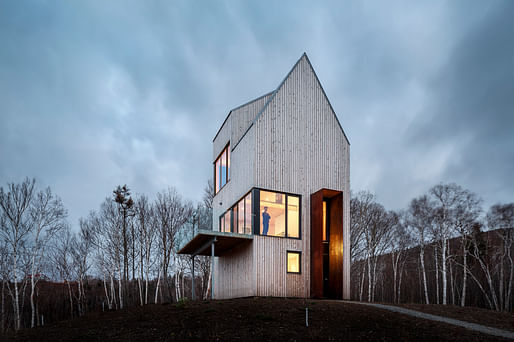
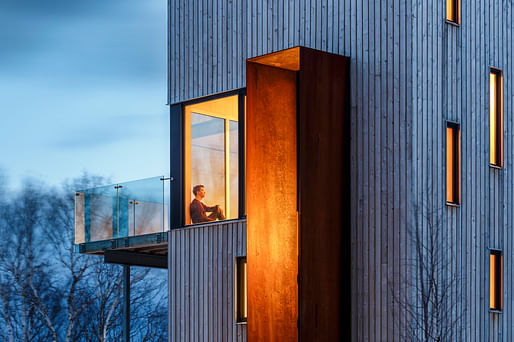
Rabbit Snare Gorge
Omar Gandhi Architect and Design Base 8 (NYC)
Rabbit Snare Gorge suggests an alternative idea of a dwelling in the Canadian landscape. The program is simple: a country home on a small footprint with an elegantly restrained palette inside and out. But the architect has visually “stretched” what we think of as conventional house proportions, distorting and transforming the structure into something slightly otherworldly. Its narrow verticality, slot windows and over height door offer a provocative new image of the cabin in the wilderness. The upper floor deck offers an elevated perspective of the surrounding valley, completing the project’s uncanny persona.
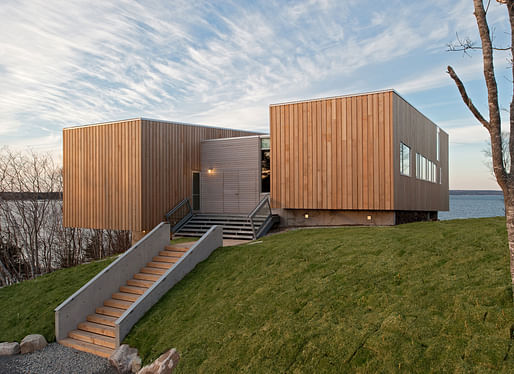
Two Hulls House
MacKay-Lyons Sweetapple Architects
Drawing vernacular references into a form evocative of two bridges cantilevered over the water, the Two Hull House generates a dramatic presence on the landscape. In abstracting the forms of the ships that once helped build up the region, the architect has infused the house with an intriguing ghost-like quality and a strong sense of place. Inside, the architecture and ocean are in dialogue, with a fenestration pattern that offers a variety of views that are distinctively different from the generic linear ocean views of most waterfront houses. The hooded decks give a sense of comfort and shelter in a harsh climate, even as they literally bring the inhabitants closer to the ocean.

Parallelogram House
5468796 Architecture Inc.
At once radical and subtle, Parallelogram House experiments with the context of ordinary suburban architecture. Its diagonal facades front and back afford more expansive and yet more private view lines than the ubiquitous and non-private in-line siting of houses in residential neighbourhoods. Its use of steel fins provides a provocative alternative both in material and form to the predictable and banal materials that are more common to the programme. This is domestic architecture that challenges its paradigm, and yet with its single-story height and earth-toned façade, it maintains a low profile.
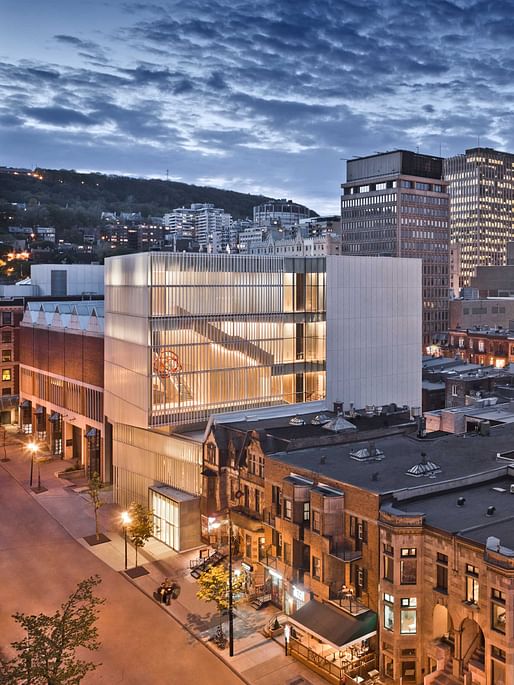
Michal and Renata Hornstein Pavilion for Peace
Atelier TAG and Jodoin Lamarre Pratte in consortium
The Pavilion for Peace beautifully and effectively fulfills its purpose of providing visitors with galleries, an all-in-one stairway, corridor, and linear public living room that winds its way up to the building. It works on both sides of its walls, providing a generous zone for gallery-goers within, while visually projecting its energy and activity to the city outside. The building is a sensitive insertion into the urban fabric, with a jogged façade that addresses the scale of the adjacent historic houses. The cool, abstract glass-and-aluminum palette of the exterior is balanced with the warm, natural wood of the interior. Its generosity of space and its strategic spatial zoning facilitates both efficient visitor movement and optional socialization. Visible from a block away and transforming into an illuminated lantern at night, the pavilion offers a transparent and welcoming transition from the gallery to the city.
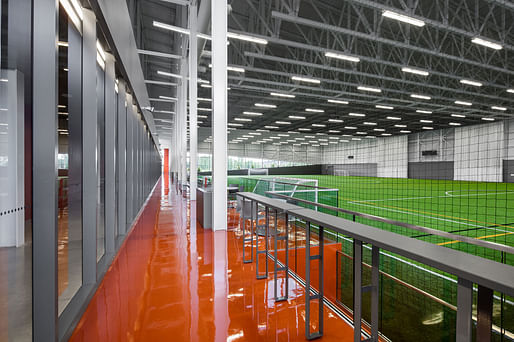
Complexe Sportif Saint-Laurent
Saucier+Perrotte Architectes and HCMA
This project is distinctively stark and austere.The strategic manipulation of what is essentially two huge boxes and the ground-level glazing generate a dynamic tension that is palpable as one approaches the building and walks through it. There is a fearless confidence in the decision to reduce all the complex and varied activities and services of the programme into two stark, strong, sculptural forms and a very small number of strong colours. The architecture takes the human activities inside and transforms them into an abstraction of strength and energy.
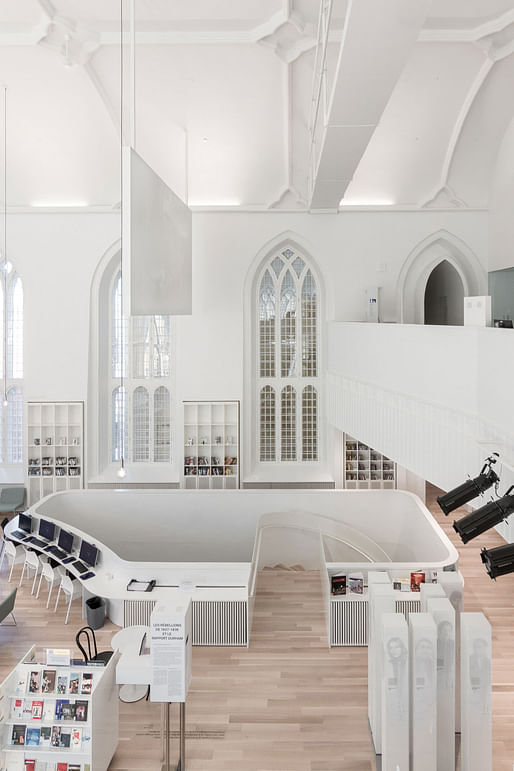
Maison de la littérature
Chevalier Morales Architectes
This transformation of and addition to a historic church into a literary cultural centre provides a complex spatial experience that engages with the past while imbuing the building with a new present-day relevance. By finishing everything uniformly in white, the structure of the historic architectural elements is brought forward. Against that structure, there is a play between the original and the new interventions. The plan of the new annex organizes the more cellular elements of the programme, freeing the space of the original church to be a more fluid interconnection of open spaces. The jury carefully deliberated over the radical approach taken to the historic church; the final structure evokes rather than restores the past. However, this re-invention offers a new spatial identity for an abandoned church.


Fort York Visitors Centre
A joint venture between Patkau Architects and Kearns Mancini Architects
This building is a powerful and robust intervention that serves as a threshold between the historic and the contemporary. Its linear plan and attenuated promenade builds on that edge condition of the on-site expressway. Its robust materiality and relentlessly repeated forms suggest the ramparts of the original fort. The design unapologetically celebrates the infrastructure around it, and invokes the concept of earth and the idea of fortification. Yet the Corten-steel canopies over the doorways provide both a welcoming entrance to this museum.
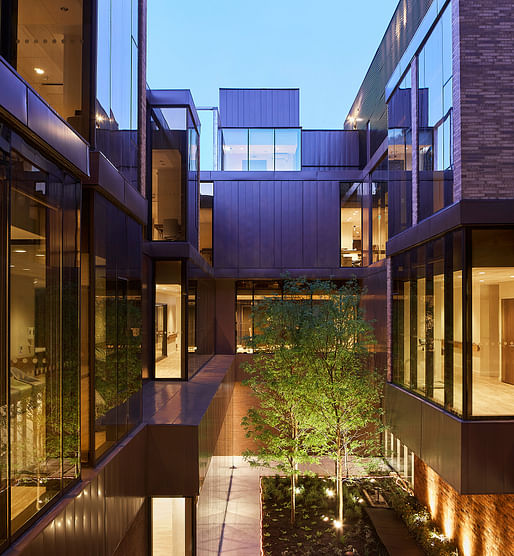
Casey House
Hariri Pontarini Architects
While carefully restoring the original century-old house, the expansion offers comfort, light and beauty to a population that has historically been underserved. The intimacy of the plan and the rich materiality turns the idea of a clinical environment on its head. The material palette is extensive and the discrete formal elements are many, but are handled with exceptional rigour and care, thereby transcending the ornate. The façade’s varied articulation and massing keep the new building in scale with the original building, as well as maintaining a harmonious ambiance and human scale for the workers, patients, residents and neighbours.
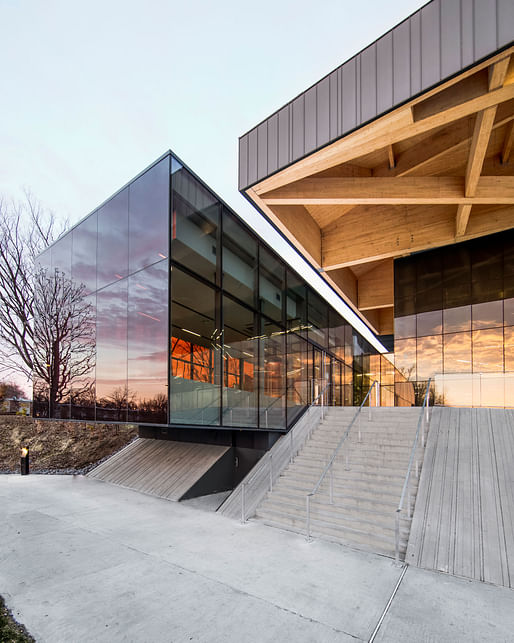
Stade de Soccer de Montréal
Saucier+Perrotte Architectes and HCMA
This suburban soccer stadium is a powerful expression of athletic activity and energy as well a strong homage to the geology of its site. The triangular geometry of the structural framework is both ambitious and restrained; its oversized glulam beams a big gesture that is in appropriate scale to the quarry below. The dramatic roofline becomes the identity of the project, its muscularity uniting the discrete components and projecting a cohesive presence. The stadium’s positioning on the berm gives it a heroic presence and celebrates it as a civic landmark.
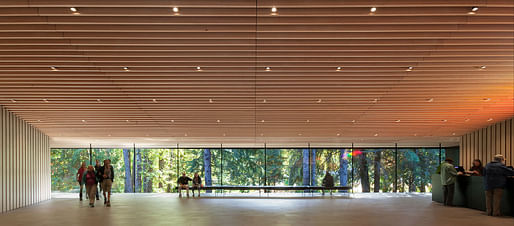
Audain Art Museum
Patkau Architects
This is a structure that is, among other things, a total response to site conditions. The architects have taken exceptional care to position the building in deference to the exiting trees and over the seasonal flood plane, keeping the building’s footprint at a minimum. Inside, they have displayed a masterful control of artificial and natural light. Their mode of fragmenting the natural daylight at the covered entrance evokes the dappled light of the forest, and glazing along the circulation spaces brings in the actual forest light. The entrance bridge from the roadway and the stairway from the ground each invite visitors into the museum in almost story-like fashion. This building is both complex and serene, a masterpiece on every level.
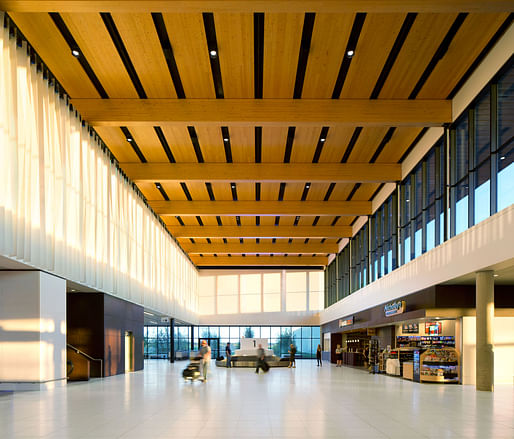
Fort McMurray International Airport
Office of mcfarlane biggar architects + designers (omb)
The airport typology is a process-heavy programme that often subjugates the architecture, but this project harnesses those very processes to create the architecture. The design successfully addresses almost every element of the programme, from the graphically superior wayfinding, to the discreetly embedded garbage and recycling bins, to the passenger areas carefully organized to create a sense of calm and comfort. Wood is used at different levels and approaches: the long-span CLT panels on the ceiling are a warm and practical structural element. The more fine-grained wood wall surfaces on the ground floor provide an elegant, meditative backdrop for the fraught process of travel.The upper-level roadway breaks up the massing of the overall building in an elegant way and offers clerestory lighting. From structural logic to passenger convenience to an overall sense of warmth and beauty, this is an airport that works beautifully at every level.

Exhibition of Architectural Design in Developing Countries 2024
Register by Fri, Feb 28, 2025
Submit by Sat, Mar 15, 2025
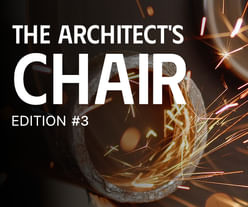
The Architect's Chair / Edition #3
Register by Wed, Jan 15, 2025
Submit by Tue, Feb 18, 2025

The Last Nuclear Bomb Memorial / Edition #5
Register by Thu, Jan 16, 2025
Submit by Wed, Feb 19, 2025
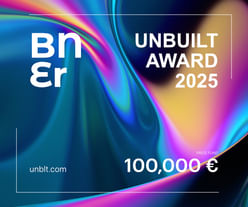
100,000 € Prize / Buildner's Unbuilt Award 2025
Register by Thu, Oct 30, 2025
Submit by Thu, Nov 20, 2025
No Comments